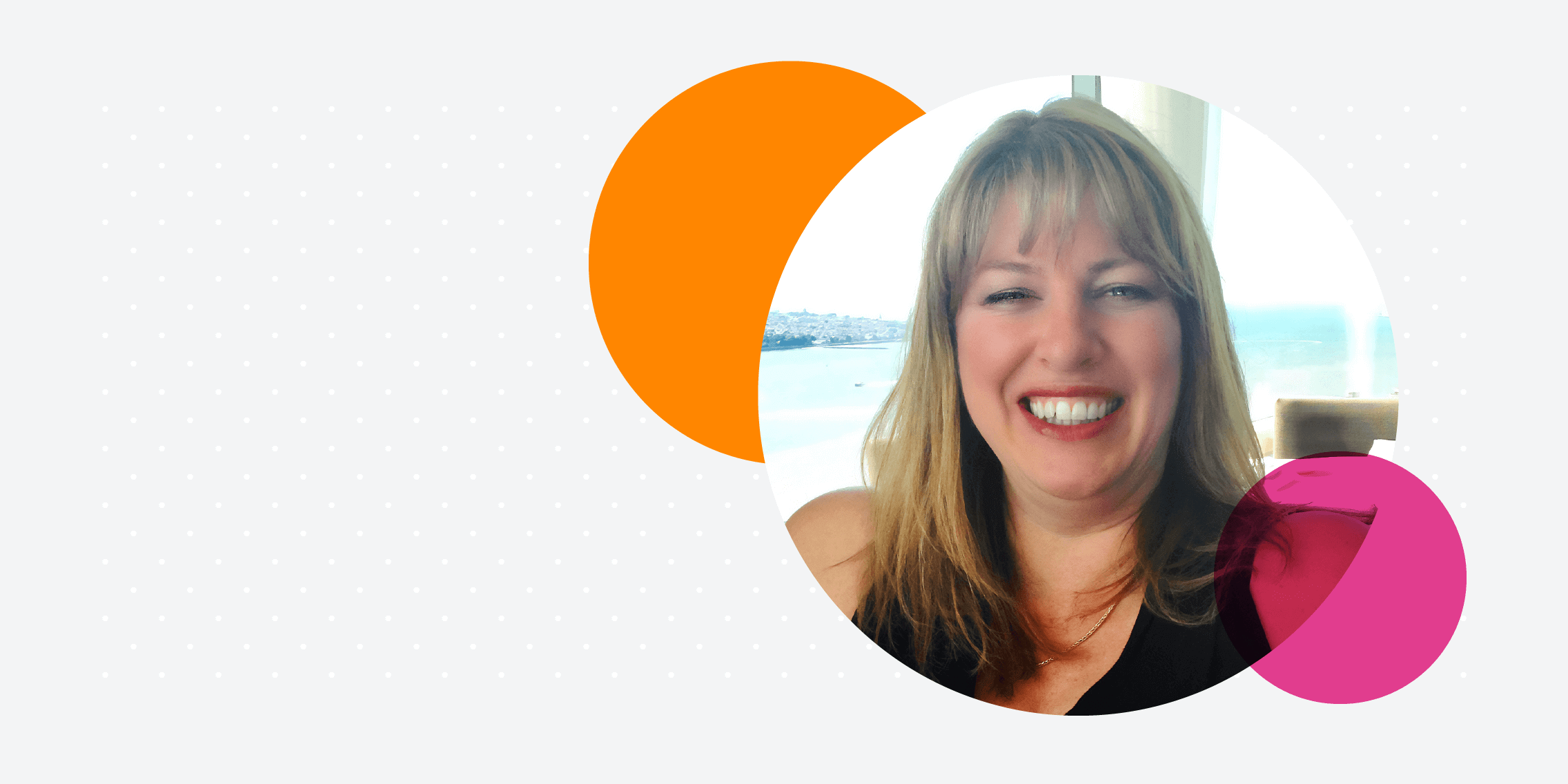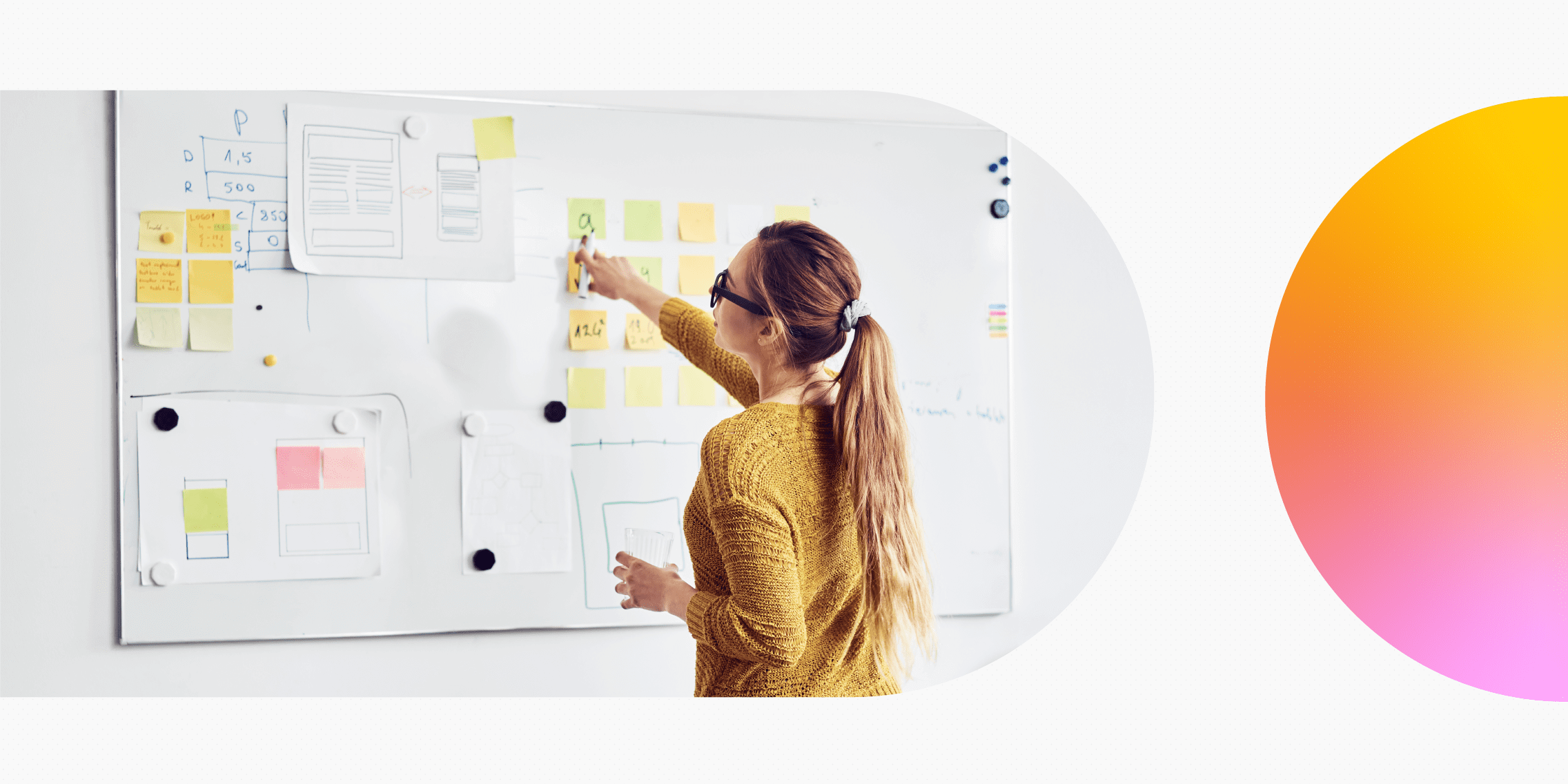Having been a web developer since the internet’s early days, Jay Halligan was no stranger to creating digital experiences for the end-user. During the pandemic, Jay was made redundant—and decided to make the switch to UX design, something she’d been increasingly passionate about.
In our latest interview, we sat down with Jay to talk about how she was able to complete the UX Design Institute UX design course in three months—and land her first UX role in two weeks.
Why did you decide to upskill in UX?
When I graduated in 1999, the internet had just hit the world. I got a job down south as a web developer after graduation. I took a break from web development and became a print designer for a charity for about 10 years, but went back to web development after that. That was about 12 or 15 years ago now.
Although I was a web developer, I’d always been involved in website design as well. In the beginning, you didn’t have designers—developers always did the design. I’d done a lot of design at school, so it always came naturally to me to think about the users and their needs. So the UX design mindset was already there for me.
I eventually started feeling burnt out from development and started leaning more toward design. In my last role, I started slowly pushing UX in the company, and supplemented my work by learning UX concepts from YouTube videos and other resources. My interest in UX just grew!
How did you come across the UX Design Institute, and what made you decide the UX Diploma was right for you?
I got made redundant during Covid, which gave me the time to sit back and assess where I was at with my career. I knew I didn’t want to do development anymore, so I decided I was going to officially make the jump into UX design.
Because I was self-taught, I knew I didn’t have all the knowledge I needed to walk straight into a UX role. I thought about getting a mentor, and started exploring courses. A lot of them didn’t have the practical element—which wouldn’t work for me, because I knew I needed a portfolio to get a job.
When I came across the UX Design Institute diploma, a lightbulb went on. The fact that it’s a university credit-rated diploma was a huge plus.
Initially, I’d given myself three months to get the qualification, so I knew it could work. When I spoke to them, they were honestly just so amazing and helpful—so I decided to go forward with it. Luckily, I was able to do the course full-time.
What was your experience of doing the course full-time?
I really enjoyed it! Quite often we’d have to do activities where we needed to get other people involved for user research and testing, and I only had my husband who isn’t very tech-savvy. But still, it was quite fun!
I loved all the activities, and I was really looking forward to getting a job where I got to do these exercises on a daily basis. The videos and learning material were such high quality as well. I also really loved the chat, where people could drop messages about portfolios and offer support. I’m not usually a social media person, but it was good to share opinions and give people advice as well.
“At the end of the course, Eoghain was so supportive. At the meeting about my portfolio, he told me it was one of the best he’d ever seen. I nearly fell off my chair!”
He also encouraged me to be more ambitious in terms of salary when I got my first role. He helped me so much with prepping for interviews too. From start to finish, I felt supported.
Overall, the whole experience was just so positive and really elevated my enthusiasm for UX. It reinforced that what I already knew about UX was right, which was a massive confidence boost.
Could you tell us a little bit more about your portfolio?
The portfolio was always the most important piece of the puzzle for me. I had a lot of theoretical knowledge already, but I knew that employers weren’t really that interested in a certificate. They just want to see what you can do for the company.
I loved that the UX Design Institute helped me put a portfolio together—and I really enjoyed the project they set. The brief was to create a hotel website. I definitely had an advantage because we had to do diagrams using Figma, which I already had experience with.
I’m so proud of what I put together, and it was so great to get such positive feedback!
What was your experience of job hunting?
On one hand, I felt like I was at an advantage because I’d been a web developer for so long. On the other hand, I felt like I was at a disadvantage because I was in my 50s. It’s something I’ve overcome before—I was in my 40s when I got my last job.
“I think age is always a bigger deal than you think it is. It’s so much more about how you present yourself; like being enthusiastic.”
There’s a book called Feminist Fight Club, which really gave me a boost when job hunting. There are sections on how to build confidence in meetings and negotiate a pay rise.
Once I’d put my portfolio up, I got LinkedIn premium so I could keep track of everything, and started talking to recruiters. The week I started the job hunt, my money was running out—and I started panicking that I wouldn’t get an interview. The first week, I had nothing. By the second week, I had a job.
I had six interviews over three days. It was so exhausting! It all happened really quickly, the recruiter contacted me and sent the job through. The role was for a web consultancy called OpenReply. When I saw the salary, I thought “this is too high—there’s no way I’m going to get this!” But he talked me into doing the interview, so I agreed.
Two minutes later, he’d booked me an interview for the same day. I’d already had two in the morning, so I was really tired and felt totally unprepared. I had the interview with my now manager, and despite my lack of in-house UX experience, he gave me the job. I started at the company the very next day!
How was it starting at the company?
Starting out in the company was brilliant. It was a world away from the culture in my previous workplace. Coming into OpenReply, I was doing something that I knew I was good at, and I had so much confidence from doing the UX Diploma, so I really didn’t have any impostor syndrome. I was just excited to get stuck in.
There was a lot of tension between the designers and the developers, and the company knew my experience meant I could speak to both groups. I was put on a project straight away where I helped to mediate between design and development.
I was jumping into the design side and helping them get more organised and establish some consistency across the files. Then I was going back to the developers and figuring out how they liked to do things. I was really able to empathise with both parties, and the position I’d been put in made me feel like an expert. People were looking to me to make decisions, I was able to immediately rise to the task. Within a week, I felt like I’d been there for years!
What’s your job like now?
Because it’s a design agency, I’m working on various different projects. The current contract I’m on is three months long. Then it might get extended, or I might be moved onto a different project. Changes can happen really fast, and sometimes they can move you from project to project. But it’s all so exciting!
I haven’t been able to use everything I learned on the course just yet, but I think that’s the nature of agency work. A lot of the time I’ll join a project mid-way through, so I haven’t had the chance to be part of the early stages of the project where you get to do the user research and ideation. I think that’ll happen as I become more senior.
I’m really loving what I’m doing right now, and I love that I get to work with so many different teams. I’m working remotely, but I still feel connected. There’s so much diversity in the people I work with—so many different perspectives from around the world. The people are really making the experience for me. I wouldn’t have got where I am without the support from the UX Design Institute!
Where do you see your career heading in the future?
I’m in an interesting position. I’m a graduate, and this is my first UX role—but I’m also not new to UX and I do have a lot of experience. I’m really ambitious to move up the ladder, and I’m lucky that my company offers so much in terms of professional development. They really encourage us to learn as much as we can: They offer in-house training and even sometimes run design competitions and hackathons. So right now I don’t have any plans to leave. I absolutely love it here!
What advice would you give to someone who is considering doing the Professional Diploma in UX Design?
The best advice I can offer is to take full advantage of the community and the Slack groups. There are so many active community members helping students get their portfolios together, and there are so many webinars you can attend. Everyone’s in the same position, and there’s a lot of support. Make contacts and network where you can!
Also, don’t let the fact that you’ve only got one project in your portfolio put you off from applying to jobs. The qualification and the portfolio will open the door for you, and then it’s just down to how you fit in with the company. Going through the course, you’re obsessed with getting your portfolio. Just do your research, take your time with it, and get it the best you can.
“Lastly, there’s no point in being humble as a bootcamp graduate. You’re there to push yourself to the best of your ability. Allow yourself to brag about what you’ve achieved!”





